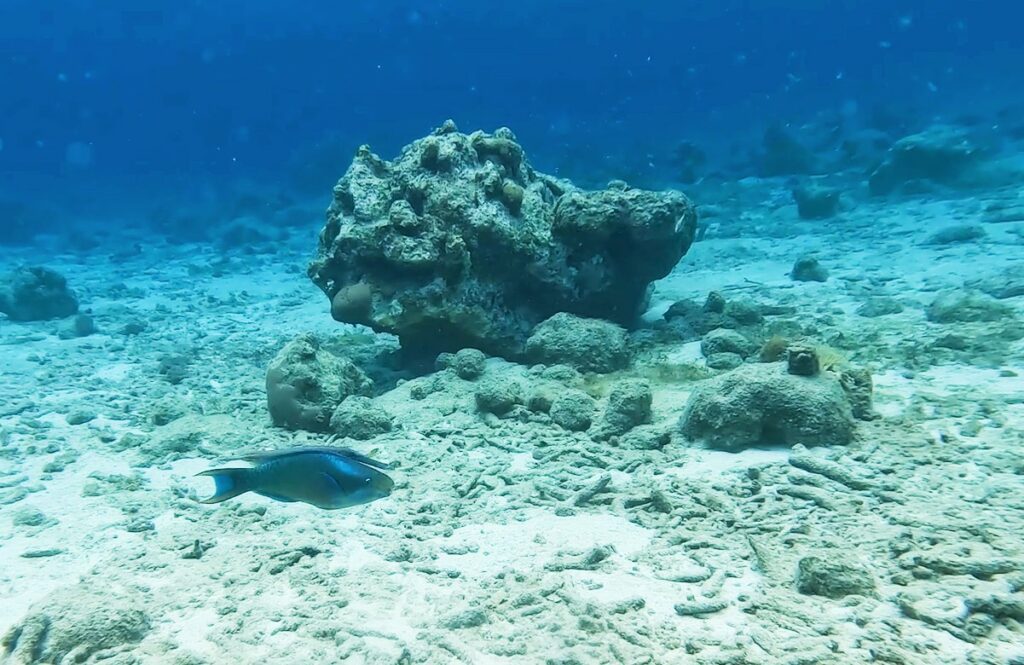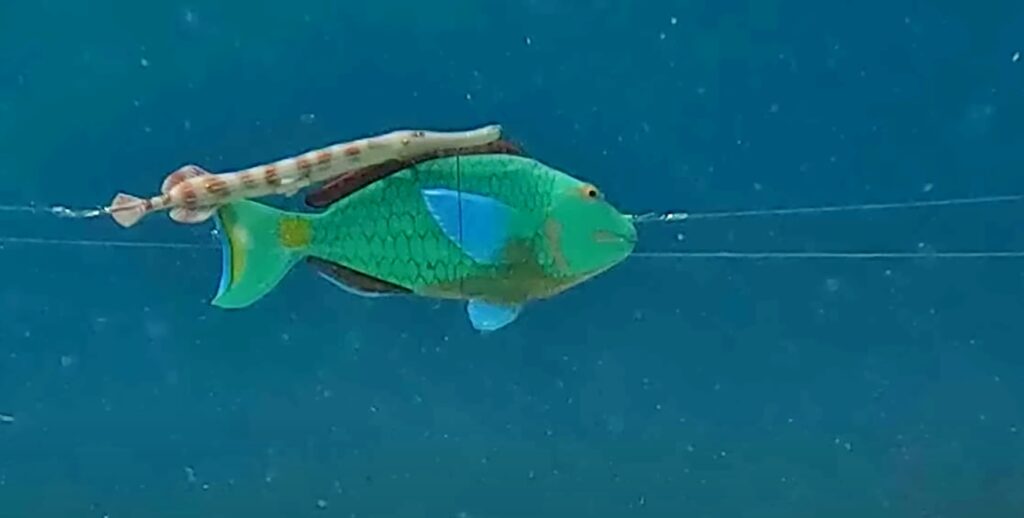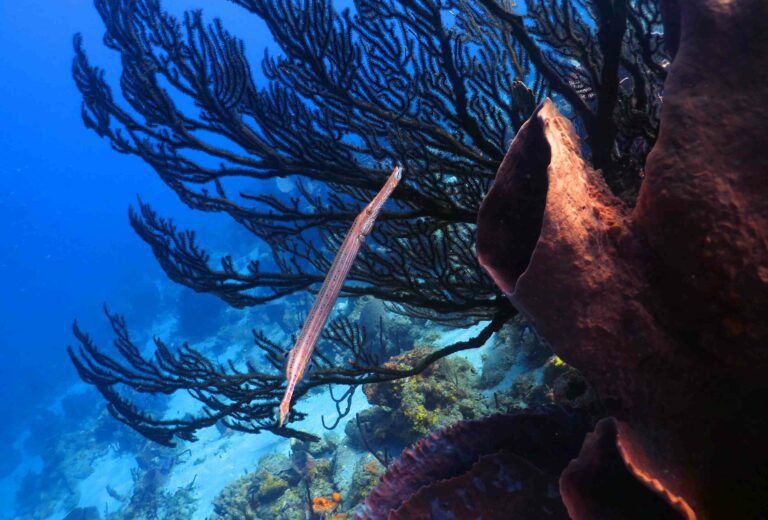It might come as no surprise to observant reef divers, but trumpetfish often like to swim unnaturally close to bigger fish. If those divers guessed that they were using the fish as “stalking horses” to provide them with cover when hunting, they have now been proved correct – and trumpetfish are the only non-human animal known to adopt such a strategy.
The wily predatory procedure has been tested in a new study carried out in the southern Caribbean island of Curaçao, by marine behaviour research associate Sam Matchette and his team from the University of Cambridge.

Human hunters once used domesticated animals or wooden replicas to crouch behind when moving within striking distance of their quarry, and trumpetfish (Aulostomus maculatus) employ a similar strategy when stalking small fish, says Matchette.
They shadow species such as herbivorous parrotfish or surgeonfish that they know will be perceived as less threatening by potential prey – though they also have other hunting tricks, such as hovering upside-down to confuse smaller fish.
Fish-model parade
The fieldwork involved hours of scuba diving for the scientists, who set up a nylon line with a pulley so that 3D-printed, hand-painted models of trumpetfish and parrotfish could be paraded past a reef hang-out for damselfish (Stegastes partitus). The reactions of the damselfish, a popular prey for trumpetfish, were captured on video for later analysis.

When a trumpetfish model was pulled past on its own, the damselfish would first swim towards the artificial fish to inspect it before retreating to their shelter – the standard sequence of actions for the species when it detects a possible predator.
With a parrotfish model on its own, the damselfish approached but were far less likely to retreat (as is often the case when damselfish see scuba divers). And this behaviour proved much the same when a trumpetfish model was attached to the side of a parrotfish model – because in that situation the damselfish failed to detect the trumpetfish.
Small trumpetfish might also benefit from shadowing behaviour because it makes them less visible to their own predators as well as to prey, says Matchette. Shadowing might also reduce the number of aggressive encounters trumpetfish are likely to have if they enter the territory of another species.
Shadowing behaviour is also thought more likely to be favoured when natural habitat cover is unavailable, such as on coral reefs that are patchy rather than abundant. As reefs worldwide become degraded, whether as the result of climate change, pollution or ocean acidification, the scientists expect shadowing to be adopted more frequently.
“This is the only known example of one non-human animal using another as a form of concealment,” says Matchette. The study was funded by the Fisheries Society of the British Isles and the Association for the Study of Animal Behaviour, and is published in the journal Current Biology.
Also on Divernet: Cuttlefish never forget a meal or a mate, Speccy cuttlefish visit 3D cinema, Cuttlefish snacks depend on what’s for dinner

